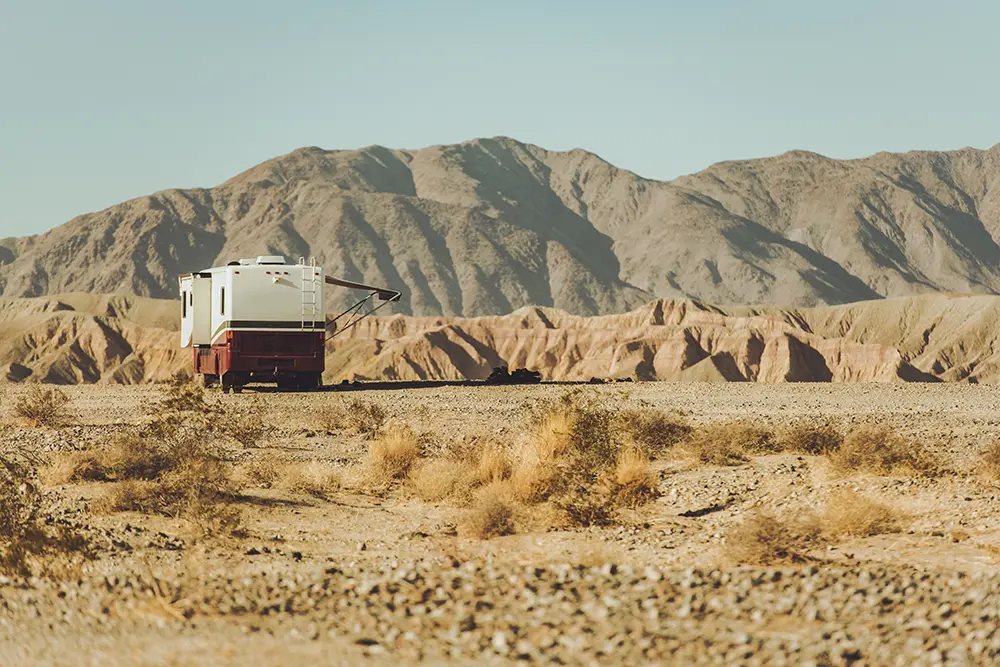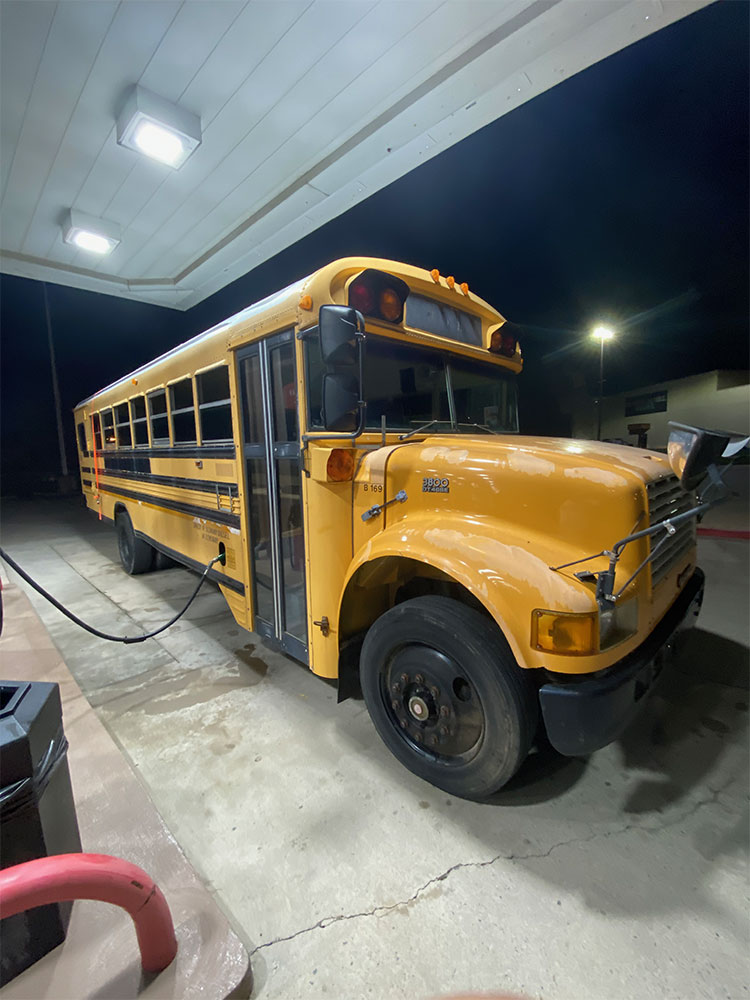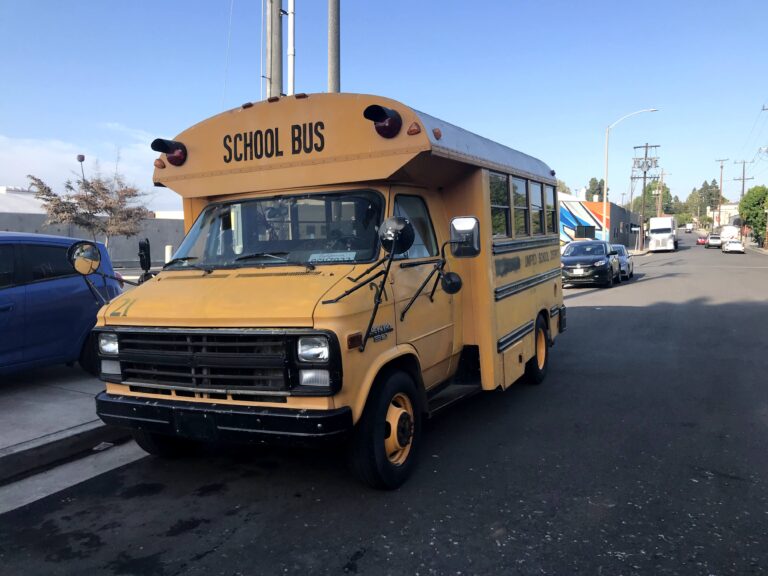When you are traveling the most important thing you need to know is where you are going to sleep each night. But when you’re looking for a place to sleep or park your vehicle you may notice some terms you may or may not be familiar with like “Boondocking”, “Dispersed Camping”, “Undeveloped Campsites” and so on. As you look for campsites you’ll start to notice 3 main different types of campsites.

Developed Campsites
If your traveling home isn’t prepared for full off grid living then you may want to stick to camping at “Developed Campsites”. A developed campsite is a campground with full amenities and even some extras that can make it a more enjoyable and comfortable experience. If you don’t like getting down and dirty when camping, this may be the best campsite option for you.
A developed campsite is generally referred to as an RV Campsite and will have electricity and sewage hookups for your home and maybe a whole lot more than that too. Some developed campsites even have on-site laundry facilities, bathrooms/showers, paved roads, swimming pools and recreation facilities. These cozy sites can make it easier for people that don’t like camping to ease into the experience. Although, more seasoned campers may not even consider it camping but more of ”Glam-ping” since you have such nice amenities.
But with the level of comfort that comes with these campsites comes with a higher price tag. If you plan on camping at a developed campsite expect to pay more per night. While not all developed campsites are super expensive, some could have a price tag of well over $100 / Night. And since these campsites can be quite luxurious, they do fill up a lot faster than other types of campsites. So be sure to make a reservation if you need one at your specific site and expect it to be a more crowded experience.

Undeveloped Campsites
Undeveloped campsites are not quite as luxurious as the developed campsite but they still are a great experience! These campsites can have some amenities but generally don’t have hook ups for water or electricity. And while these sites usually have a bathrooms, they don’t often have showers. These sites usually have a parking spot for your vehicle right next to a fire pit and picnic table and some spots to set up tents if you want want. And they usually have a water source with drinking water access. These campsites are the most commonly found across the United States and are fairly priced, usually ranging from $10-35 per night. With more expensive sites being located on National Forest or National Park Land.
Since there are limited amenities it is recommended to have a good amount of fresh water and a source of power whether that’s solar or a generator when camping at these sites. Usually there is a camp host at these sites that takes the payment for your stay. But sometimes you just drop your payment into a drop box and rip off a receipt and clip it on a designated spot at your individual campsite.

Boondocking / Dry Camping
Boondocking is a term that you’ll notice a lot in the nomadic and location independent communities. This term is another way to say “Dry Camping”. Which essentially means that you are camping in the wild without any types of amenities like electricity, water and sewage. Boondocking can be an absolutely amazing experience compared to different types of campsites. But without any amenities you have to be much more prepared for this type of camping. You can find many boondocking camp areas in BLM Land and near National Parks in the United States.
If you’ll be camping in a dry camping area you may notice signs for “Dispersed Camping”, sometimes dispersed camping can be limited to tent camping only and you can’t access these sites with a vehicle. Be sure to always check the local rules and regulations for camping in your specific destination. Dry campsites are usually positioned quite far away from one another. This can give you a very private and immersive camping experience. While this can be a very relaxing time for a lot of people, many people just don’t like camping without amenities like bathrooms and showers. But if you have enough space in your home’s holding tanks you can camp in one spot for quite a long time. And for some people camping is more about the social experience and they may prefer a more developed campsite.
Before you go boondocking it’ll be much more comfortable if you have off grid power like a solar power bank or generator. Be sure your power system can handle what you’ll need as well like an air conditioner or heater. And calculate how much water you and anyone you’ll be traveling with will need and always be sure to bring more than necessary.

How Much Does it Cost?
Developed and undeveloped campsites do require payment for their use. But boondocking and Dry Camping are generally available at no cost. Although sometimes people can charge for you to dry camp, when camping on their privately owned land.
Where to Dry Camp / Boondock
If you want to try finding a boondocking location or dry campsite there are several different websites and resources to help you find your next camping destination. Here are a few of my favorite resources that I use to look for campsites when traveling in my skoolie.
Campendium
Campendium is a great resource for finding campsites in general, including tent camping. But you can find vehicle camping information and other more detailed information as well.
FreeCampsites.net
FreeCampsites.net is a go to website for finding boondocking and dry camping sites.
Bureau of Land Management
You can find some very useful information on the official Bureau of Land Management website. Although when looking for dry camping locations on BLM land be sure to follow the BLM’s rules and regulations for dry camping.
Google Maps / Earth
You can use Google Maps or Google Earth to find different types of campsites and their locations. When using the maps, make sure to put on “satellite view” so you can see the terrain to get to your desired campsite.
Is It Safe to Boondock / Dry Camp?
Boondocking can be a very safe experience when it comes to camping in the different types of campsites. But it can have it’s insecurities especially if you are camping alone. If you’re camping far out in the middle of nowhere you may not have a cell phone signal. So, I would let someone very close to you always know where you are going to be boondocking and how long you plan on staying at that campsite. That way if they don’t hear from you by the time you were supposed to be back they can call for help with your location information.
In fact some dry camping areas have a form in their parking lots. This is where you put down your vehicle’s information and the duration of your camping trip. The forest rangers will check if any vehicle has stayed past its desired time frame. And they will create a search party, if needed. However, some people may prefer the comfort of having a camp host or other campers nearby when they go camping in case of emergency.









